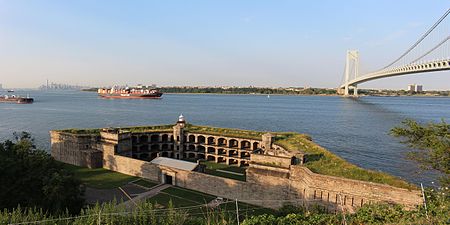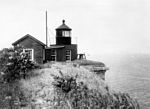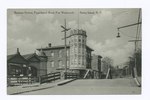Battery Weed
1861 establishments in New York (state)American Civil War fortsArtillery batteriesBuildings and structures in Staten IslandForts in New York City ... and 8 more
Forts on the National Register of Historic Places in New York (state)Gateway National Recreation AreaGovernment buildings completed in 1861Military facilities on the National Register of Historic Places in New York CityNational Register of Historic Places in Staten IslandNew York City Designated Landmarks in Staten IslandTourist attractions in Staten IslandWar of 1812 forts

Battery Weed is a four-tiered 19th century fortification guarding the Narrows, the main approach from the Atlantic Ocean to New York City. Located on the Staten Island waterfront on the west shore of the Narrows, directly across from Fort Hamilton and the now-destroyed Fort Lafayette in Brooklyn, the fort was intended to protect New York from attack by sea. When built, it was named Fort Richmond, as was a previous fort on the site.
Excerpt from the Wikipedia article Battery Weed (License: CC BY-SA 3.0, Authors, Images).Battery Weed
South Weed Road, New York Staten Island
Geographical coordinates (GPS) Address Nearby Places Show on map
Geographical coordinates (GPS)
| Latitude | Longitude |
|---|---|
| N 40.605277777778 ° | E -74.054722222222 ° |
Address
South Weed Road
South Weed Road
10305 New York, Staten Island
New York, United States
Open on Google Maps









